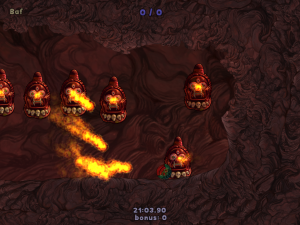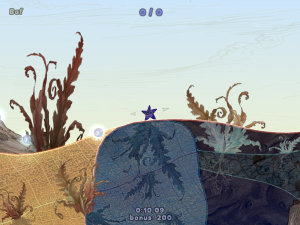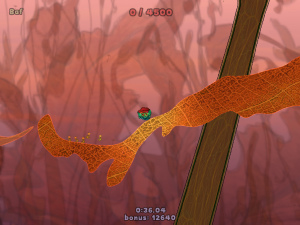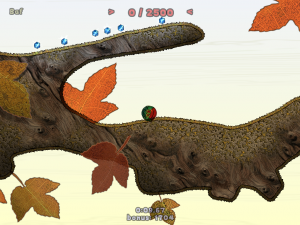Gumboy: The Hell
 Gumboy‘s final level, titled “The Hell”, takes place in a system of caves with lava-drips and hovering, fire-breathing Thai demon heads (which, curiously, breathe their fire from their noses, not their mouths). I think Gumboy died more times in this level than in the rest of the game combined, but fortunately, there’s an abundance of save points. The save points are mostly situated in places where you can’t go backward, or at the very least have no reason to do so, and thus the level is effectively chopped up into a number of mini-levels.
Gumboy‘s final level, titled “The Hell”, takes place in a system of caves with lava-drips and hovering, fire-breathing Thai demon heads (which, curiously, breathe their fire from their noses, not their mouths). I think Gumboy died more times in this level than in the rest of the game combined, but fortunately, there’s an abundance of save points. The save points are mostly situated in places where you can’t go backward, or at the very least have no reason to do so, and thus the level is effectively chopped up into a number of mini-levels.
As a whole, it’s something of a recapitulation of all the special tokens and powers you’ve become familiar with over the course of the game — tokens that let Gumboy jump, make him smaller, make him stick to walls, turn him light as a balloon. There’s even a new token that turns him temporarily fireproof, something that would have had no practical use outside of The Hell. One fairly common token from before is notably missing: the one that turns him into “water”.
Eventually, you come to an empty chamber with no way out. As you roll across a particular trigger spot, a number of those demon heads suddenly appear and start firing at you. Again, I stress that there’s no way out. You can dodge the blasts — there’s a nice curved bit on one wall that you can use to get over the fireballs that move horizontally — but this just prolongs matters, because they’re going to blast again, and there’s no way out. I mean, okay, there is after a while. It’s a survival challenge: after you’ve spent a certain amount of time in there without dying, the heads disappear and are replaced with the final exit portal, which takes you back to the sunny arboreal spaces of the tutorial levels, where the game’s first non-interactive cutscene plays. Your reward for passing through The Hell: you meet Gumgirl! I laughed out loud at this, which is something few games indeed have made me do.
Still, while you’re in that chamber, there is (as usual for this game) no indication of the rules. You’re expected to just catch on. And yeah, that did in fact work. But for a while, I contemplated the possibility that this was it. An ending without triumph, where your temerity in entering The Hell is rewarded with an impossible challenge. There’s no mechanical reason why this couldn’t be the case; it’s not like it had to let you finish in order to unlock the next level, because the level-selection UI made it clear that there wasn’t one. The main thing that made me think this wasn’t the case was the thought that news of the resulting player outrage would surely have reached my ears.
It’s the most intense action sequence in a pretty tranquil game, and you know something? It’s still pretty tranquil. It’s still far from a twitch game. The heads move and fire in a regular pattern, a cycle that lasts a matter of seconds. Once you’ve found a sequence of moves that lets you live through such a cycle, all you have to do is repeat it without mistakes for enough iterations to convince the game that you can repeat it indefinitely. And that’s something best accomplished with meditative calm.
 Comments(0)
Comments(0)

